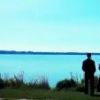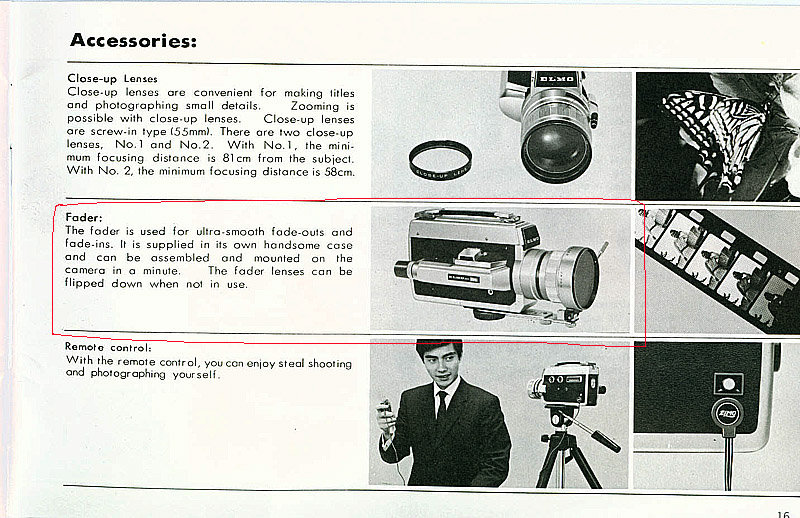-
Posts
141 -
Joined
-
Last visited
Everything posted by Timothy Fransky
-
It's one of my favourites. It really is. I mean, you have to love this kind of story. It's not exactly box-office gold. I actually feel Mulligan looked amazing throughout the film. We really see a person, rather than an object. That sounds trite, but it isn't in the film. We, the audience, really get to see what Oak sees. Her strength, her independence, and her desire to be her own person. That might be the Scandinavian aesthetic at work—clean, clear, and fresh. Isn't it interesting how she says she wishes a man to "tame" her, but the story proves to her how wrong a notion that is? She doesn't need taming. She's fine as she is. They dispensed with the 19th century domesticity in the film. The impression we're left with is that Oak and Everdene's roles will change very little. They will just be much more open with one another. That's truly beautiful. Boldwood is a great character. I guess there is a bookend between the Oak shooting the dog and Boldwood shooting Troy. I'm not sure what that means.
-

Cine-Kodak Special masks
Timothy Fransky replied to Timothy Fransky's topic in Accessories (Deprecated SubForum)
No bother at all! Those resources are extremely helpful! -

Cine-Kodak Special masks
Timothy Fransky replied to Timothy Fransky's topic in Accessories (Deprecated SubForum)
That's a great list. Thanks again. I'm not looking to emulate any era (though my biggest influences are Chaplin, Keaton, and Tati). That's a one-way ticket to mediocrity. I'm well aware how wide a topic it is. There's an entire European catalogue of silent film that often gets forgotten. It can never be a truly hand-cranked, in-camera, nitrite medium any longer. No matter how much we might love those films from 1915-1940. The whole thing changed with "The Great Dictator." One the Little Tramp spoke audibly, the spell was broken. Silent comedy (not silent film mind) is book-ended by Chaplin. The minute the Tramp looks down the barrel of that Pathé in "Kid Auto Races at Venice," the die is cast. Once the Tramp spoke, the era ended. Tati did manage to recapture a good deal of it with his use of 70mm, but he had also studied that golden era. He reinterpreted the language of physical comedy and mime by combining it with a good deal of the new wave. So I can never emulate 1925 (or any year really) unless I have a really good reason. -

Cine-Kodak Special masks
Timothy Fransky replied to Timothy Fransky's topic in Accessories (Deprecated SubForum)
I want to make new silent/visual comedies. So I'm exploring the techniques used in the golden age of silent cinema to see what's practical for today. It's not really about recreating anything. Rather it's being aware of the established language of silent film, but telling my own stories. I'm not a cinematographer, I should reiterate. However, I feel that a director should have a working knowledge of cinematography so he/she can adequately realize his/her vision. This is especially important if you're working in a style of cinema that's largely dead. The last great director of visual comedy was Jacques Tati and that was the 1960s. So whether I use the physical, mechanical effects or not, I want to know how they are/were done. Certainly I agree that the Pathés, 2709s, and Mitchells were incredible platforms for creative filmmaking. Consumer or even pro-sumer film cameras cannot compete. The question becomes then: are those techniques possible on the equipment we currently have access to? As a director, you have to think in terms of compromise. Where are you going to employ the most effort? You just can't have everything. So it's not so much a matter of dropping ambitions, it's more a matter of efficiency. A finished film is better than a theoretical film. If you're going to resurrect dead techniques, you'd better have a good reason, or they're wasted. -

Cine-Kodak Special masks
Timothy Fransky replied to Timothy Fransky's topic in Accessories (Deprecated SubForum)
Again, excellent info. Thank you. I saw an Elmo fader for sale on another site and wondered if it was worth the bother. Doesn't sound like it. It seems to me that the matte box wouldn't give me the same effect as a proper mask/matte slide. In fact, it would more than likely cause focus headaches. I do think a mechanical/manual in-camera effects have a unique look, but unless the camera itself is designed to employ them, it's a waste of energy. Digital vignettes/masks look almost ironic when they're used. I'm thinking Wes Anderson here. That may just be because I find his sincerity suspect. I'm not certain he doesn't use iris effects and matting in a hipsterish fashion. I suppose that's a perfectly valid use, but I personally don't care for it. Anachronisms can be funny. Buster Keaton used them quite effectively. I never felt he was laughing at the outdated technology, though. "Our Hospitality" uses the old rail technology for laughs, but it doesn't feel condescending. Wes Anderson does feel that way. But I digress... -

Cine-Kodak Special masks
Timothy Fransky replied to Timothy Fransky's topic in Accessories (Deprecated SubForum)
That's some excellent info. Precisely what I was looking for. I have an Elmo Super 106 and I just bought a Bell & Howell Model 627 16mm. I know the Elmo has an attachable "fader," but I'm not sure this does the same thing as an "iris-in." As for the B&H, I'm not sure how a matte box could even be fitted. It's an oddball turret design. -
This film shows the use of clever slide-like masks. They slide into a slot between the gate and lens (I assume). I love the effect. In visual storytelling, masking off certain parts of the frame is very useful. Chaplin used the iris-in to great emotional effect. This can be done easily in digital editing, but if I wanted to use these tools in-camera, how would I do it? Were these specific to the Cine-Kodak Special? Or did all cameras before the 50s have such options?
-
Update! It DOES work. It must've been stuck.
-
I believe it was the last v14 freeware I couldn't install. It would install about 90% then freeze up.
-
Resolve has trouble with Win 10. I don't know why. I've never been able to get it working on my PC. I'm no expert, but I've been using Lightworks v14 free. It's a good option if you can't get Premiere or Resolve.
-

Framing and composition questions
Timothy Fransky replied to Timothy Fransky's topic in General Discussion
Also, with the lack of availability of DS8, it doesn't make sense for me. If I were to change formats, I'd just go full 16mm. -

Framing and composition questions
Timothy Fransky replied to Timothy Fransky's topic in General Discussion
Camera is Elmo Super 106. -
I agree with the others telling you not to underestimate the quality of silent films or the filmmakers. A Buster Keaton film properly exhibited is a Swiss watch. The timing and pace are brilliant. I would recommend getting your hands on a really good print/scan of any or all of these films: https://www.bfi.org.uk/news-opinion/news-bfi/lists/10-great-silent-horror-films You have to remember that these were cutting edge films in their day. All the special effects were done in-camera. Pay close attention to the staging and framing. They're all unique from one another, but generally staging was still very theatrical in the early 1920s. The performers may seem like they're overacting by today's standards, but keep an eye peeled to how physical the acting is. These actors are telling the story with their bodies, not their voices. That's surprisingly tricky to do well. I would recommend assigning a movement coach to your cast. Make sure they understand the language of gesture. I think some of these movies are still pretty unsettling, even now. Especially the Lon Chaney films. I mean if you want to do a parody, that's another thing altogether.
-

Framing and composition questions
Timothy Fransky replied to Timothy Fransky's topic in General Discussion
That's good advice. I'll look into the anamorphic adapters you mention. I'm not certain they'll work on my Elmo, though. Something to consider all the same. -
Here's a NOS projector lamp. It's a long shot, but maybe one of you just happens to have a projector with a burned out lamp. Ised in B&H consumer projectors like the QX80. Thanks!
-
- Lamp projector
- super 8
-
(and 1 more)
Tagged with:
-
I'm so glad you also liked it! I also thought it had to be digital, no it was shot entirely on Vision3 35mm stock in varying speeds. The scene where Bathesheba sings "Let No Man Steal Your Thyme" is amazing. This is why I say it's as good as "Barry Lyndon." The scenes lit by lantern are equally masterful.
-

Framing and composition questions
Timothy Fransky replied to Timothy Fransky's topic in General Discussion
This is really what I'm describing, isn't it? My background is the theatre, in which the audience does indeed see in three dimensions. Sometimes a director will play with space to limit or expand the audiences' vision, but the only limits on space are really the building you're working in. IMAX is a very useful tool, if expensive. -

Framing and composition questions
Timothy Fransky replied to Timothy Fransky's topic in General Discussion
Makes sense. Wouldn't bother me where I sat, so long as I could see. Others probably feel differently. One of the things I love about Buster Keaton films is the height of his landscape shots. I would think that with the right subject, you could draw an audience more fully into the film. -
Whoops. Double tap
-

Framing and composition questions
Timothy Fransky replied to Timothy Fransky's topic in General Discussion
Obviously we'd have to be talking about 65mm to make this happen. IMAX solved the riddle already I guess. Too bad it's so costly. I think The Dark Knight is the only narrative IMAX feature to turn heads. Dunkirk was a bit of a bust. -
So I've been examining my recently acquired Elmo Super 106, and I'm noticing the powered zoom (t/w switch) isn't doing anything. Even when I pull the trigger, the lens doesn't move and there is no change in the VF. Help?
-
So I've been examining my recently acquired Elmo Super 106, and I'm noticing the powered zoom (t/w switch) isn't doing anything. Even when I pull the trigger, the lens doesn't move and there is no change in the VF. Help?
-

Framing and composition questions
Timothy Fransky replied to Timothy Fransky's topic in General Discussion
I'd want to shoot taller as well as widee. -

Framing and composition questions
Timothy Fransky replied to Timothy Fransky's topic in General Discussion
That simple, huh?




